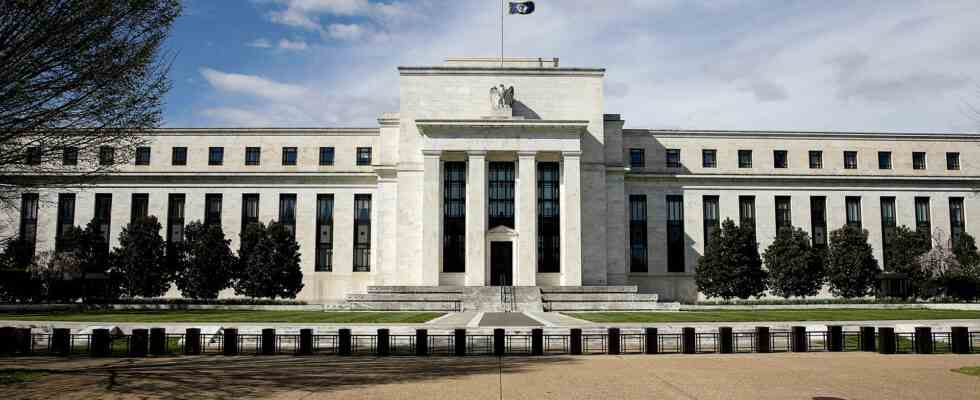Status: 12/14/2022 9:16 p.m
The US Federal Reserve will raise interest rates by a further 0.5 percentage points shortly before the end of the year. After four max interest rate steps, she takes her foot off the gas a bit – but holds out the prospect of further increases.
As expected, the US Federal Reserve increased its key interest rate by 0.5 percentage points to combat inflation. It is now in the range of 4.25 to 4.50 percent, as the monetary authorities announced at their last meeting of the year. After a series of extraordinarily strong interest rate hikes, the Fed is thus slowing down the pace somewhat.
Previously, she had raised the monetary policy level by 0.75 percentage points in four giant steps. Fed Chairman Jerome Powell had already indicated in November that at least these big jumps could be over.
Inflation momentum slows down
Because the aggressive pace and the increase in the interest margin to the highest level since 2007 have recently had an effect: the US inflation rate fell in November surprisingly strong to an annual low of 7.1 percent. The fifth straight drop raises hopes that the US may be past the peak of the inflation wave.
The Fed now expects the inflation rate to be only slightly higher than previously assumed for the current year. On average, it should be 5.6 percent. This indicates that the momentum of the price increase is slowing down. Many experts therefore expect that the interest rate peak will be reached in a few months, including VP Bank chief economist Thomas Gitzel: “The end of the tightening cycle is in sight. In the first quarter, the Fed is likely to raise the key interest rate by 25 basis points at each of its two meetings . But that’s the end of it,” is his prognosis.
Investors on the stock exchanges are also counting on the fact that interest rates will peak in just a few months. Soaring interest rates are generally poison for the stock markets because they make stocks less attractive in two ways. In addition to increasing financing costs for companies, they make interest-bearing investments such as bonds comparatively more attractive.
Fed signals more rate hikes than before
However, it remains to be seen whether the hopes will be fulfilled. The monetary watchdogs apparently do not intend to end their fight against inflation any time soon. They have signaled that they will tighten the reins further in the coming year, albeit less briskly, with more rate hikes than so far. The key interest rate should average 5.1 percent at the end of 2023. In 2024, according to the updated projections, it will drop to 4.1 percent. In 2025 it should end up at 3.1 percent.
“We will stay the course until the job is done,” Powell said at today’s news conference. In the past he had repeatedly emphasized that the Fed had to have staying power in the fight against high inflation. “Despite the recent slight fall in the rate of inflation, the dangers of a wage-price spiral and further increases in inflation expectations have not yet been averted,” explained KfW chief economist Fritzi Köhler-Geib.
The increase in the key interest rate makes loans more expensive, which slows down demand. This helps bring down the inflation rate, but also weakens economic growth. In fact, the Fed, which is committed to the goals of price stability and full employment, is predicting significantly lower economic growth for 2023 than assumed just three months ago. The gross domestic product (GDP) of the world’s largest economy will grow by 0.5 percent in 2023. That would be 0.7 percentage points less than forecast in September.

